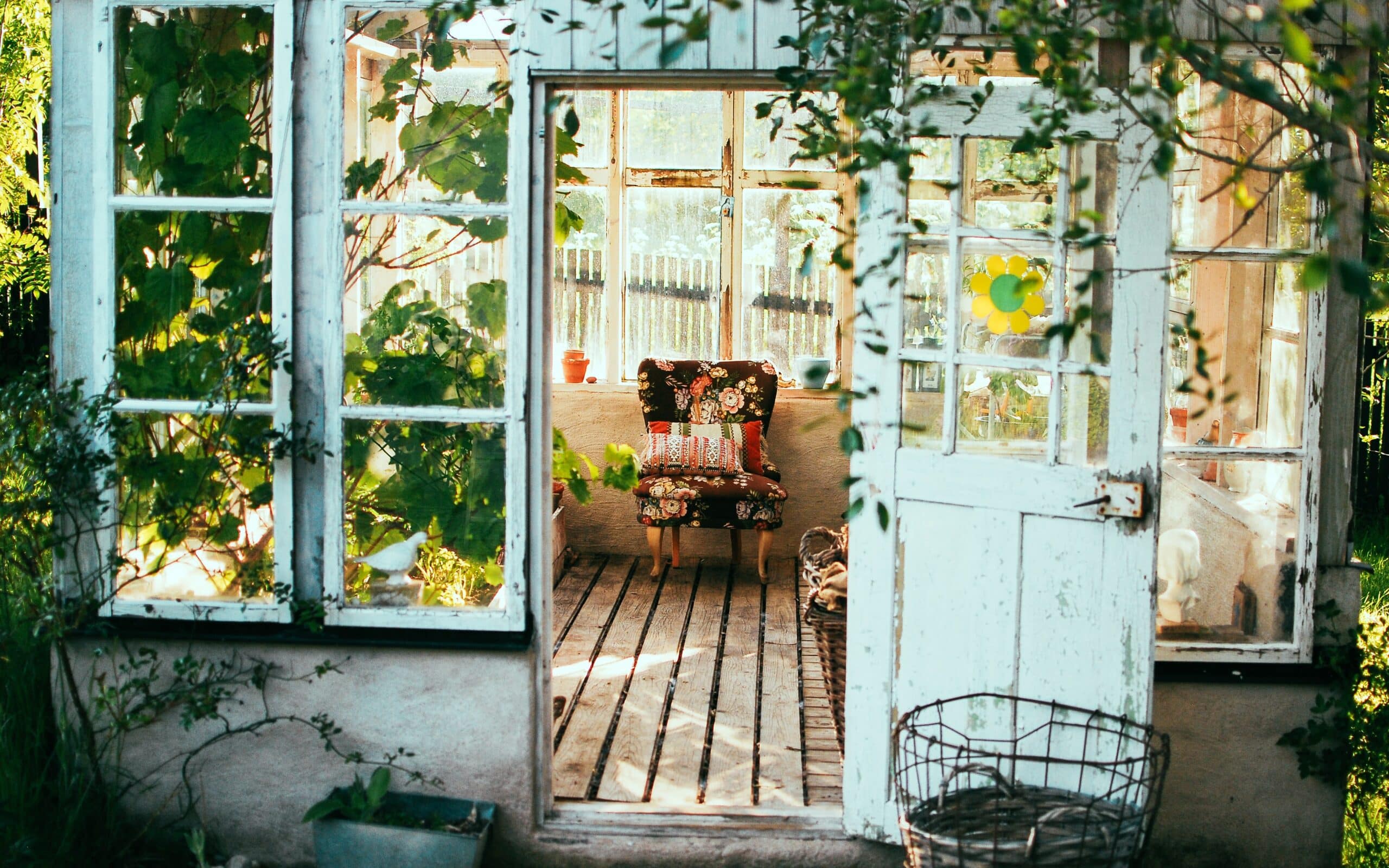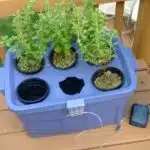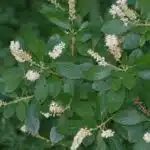Your garden is an important part of your home, providing beauty and tranquility in your outdoor space. But do you really know all the surprising facts about gardening? From the origins of some of your favorite flowers to the hidden benefits of gardening, there are plenty of amazing things you can discover about your garden. In this article, we’ll explore 10 of these surprises that will truly amaze you.
Gardening has a long history that dates back centuries, with evidence suggesting it was practiced as early as 12000 BC! While many plants have been cultivated over time, some have remained unchanged since they first appeared in gardens centuries ago. Plants like roses, lilies and tulips are still popular today – but did you know that these flowers were actually first introduced from Europe by settlers in the 1600s?
Gardening isn’t just about aesthetics either – there are many hidden health benefits to getting out into nature and tending to your garden. Studies suggest that gardening can reduce stress levels and improve mental health. Plus, caring for plants improves air quality, reduces noise pollution and even encourages biodiversity in your own backyard!
By the end of this article, you’ll be an expert on gardening – so let’s get started exploring these 10 surprising things you didn’t know about your garden!
Different Types Of Soil And Their Unique Uses
Have you ever stopped to think about the different types of soil and their uses? Well, this article will enlighten you on some of the surprising facts about soil that you never knew.
First, let’s look at sandy soil. This type of soil is perfect for those who have a lot of outdoor space, as it drains quickly and is easy to work with. It’s also great for growing vegetables and herbs because it allows root systems to spread more easily. However, it can be prone to drying out, so make sure to water regularly!
Next up is loamy soil. Loamy soil has a good balance of sand, silt and clay, making it an ideal choice for gardeners who want a well-draining yet moisture-retaining option. It’s also great for retaining nutrients and providing an environment where plants can thrive. On the other hand, if you don’t keep up with regular maintenance, loamy soil can become waterlogged – so make sure to check your garden regularly!
Lastly, there’s clay soil. Clay soils are known for being heavy in texture and great at holding moisture which makes it perfect for growing certain plants such as shrubs or trees. Despite its drawbacks (e.g., difficulty in working with due to its weight), clay soils provide excellent physical support and hold essential minerals that are essential in helping plants grow healthy and strong.
As we’ve seen here today, there are many advantages and disadvantages of each type of soil depending on what kind of gardeners you are – but one thing remains clear: no matter what your needs may be, there’s a type of soil out there that’ll suit them perfectly! Now let’s move onto the benefits of mulching…
Benefits Of Mulching
Mulching is an underrated gardening activity that can make a huge difference in the health of your garden. A common analogy to explain mulching is that it’s like giving your plants a warm blanket during cold winter nights. Just like how blankets keep us comfortable and safe, mulch helps protect your plants from extreme temperatures, pests, and weeds.
One example of its effectiveness can be seen in my own garden. In hot summers with dry soil, I noticed that my tomato plants were wilting and struggling for survival. After applying mulch around them, their leaves stayed hydrated throughout the day and the tomatoes produced more fruit than before!
Mulching also promotes better drainage and water absorption which can help keep soil healthy over time. It helps retain moisture in the ground which prevents evaporation and encourages deeper root growth. Furthermore, it keeps weeds away while providing nutrients to the soil as it decomposes – all without using any chemicals or fertilizers!
By understanding the benefits of mulching, you can give your garden an extra layer of protection this summer. Doing so will provide you with healthier plants, tastier fruits and vegetables, and a more sustainable outdoor space overall – all without breaking a sweat!
The Impact Of Climate On Your Garden
Surprisingly, the climate of your garden can have a major impact on its overall health. According to the National Gardening Association, an estimated 75% of gardening success is determined by climatic conditions. This means that if your garden is located in a region with extreme temperatures or soil composition, you must take extra steps to make sure it stays healthy and vibrant.
When picking out plants for your garden, you should consider their hardiness zone – this helps identify if they are suitable for the climate in your area. Annuals are usually more sensitive to extreme temperatures and might need more maintenance than perennials in order to survive. Additionally, excessive drought or rainfall can cause stress on certain species of plants and even lead to diseases like fungal infections.
It’s important to be aware of what kind of climate your garden is exposed to so that you can properly select which plants will thrive there and also plan ahead when it comes to watering and maintenance. For instance, if you live in a dry area then investing in a good irrigation system could be beneficial. Likewise, supplemental nutrients may be necessary if the soil quality is not ideal or if there’s been an extended period of dry weather.
By taking into account the climate surrounding your garden, you’ll be able to give your plants the best chance at survival and ensure that they remain healthy and vibrant throughout the growing season. With that knowledge in hand, let’s delve into the role of microorganisms in your garden and how they can help promote plant health.
The Role Of Microorganisms In Your Garden
Microorganisms play an integral role in the health of your garden. While often overlooked, these tiny organisms are essential for the growth and development of plants. For instance, bacteria help to convert nitrogen from the air into a form that is usable by plants. In addition, fungi break down organic matter and release nutrients that are also absorbed by plants. These microorganisms work together with other elements in the soil such as earthworms to create natural fertilizer.
The presence of microorganisms is affected by climate conditions. Warmer temperatures tend to increase microbial activity while cold temperatures slow it down. In addition, rainfall can also impact soil microbes depending on how long it lasts and how much moisture the soil contains. Consequently, understanding how climate affects your garden is important for creating optimal conditions for plant growth.
It’s clear that microorganisms are critical components of a healthy garden ecosystem. By understanding their role and how climate affects them, you can create an environment conducive to growing healthy plants and flowers. Taking advantage of this knowledge can help you create a vibrant garden that will thrive for years to come!
Using Worms To Create Natural Fertilizer
Much like a bee pollinates flowers, worms are the unsung heroes of the garden. Symbolic of life and renewal, they help create natural fertilizer that is essential for any healthy garden.
Worms are nature’s recyclers – they eat organic material such as fallen leaves and dead plants, breaking them down into a nutrient-rich compost. This compost is then excreted by the worms, resulting in a natural fertilizer which helps to feed your plants with essential nutrients. Not only does this provide the soil with various nutrients that would otherwise be lacking, but it also helps to improve soil structure so that it can better hold water and air.
In addition to creating natural fertilizer, worms also help aerate the soil by burrowing through it – creating tunnels which allow oxygen and other essential elements to penetrate deeper into the ground. This is beneficial for both plant roots as well as beneficial bacteria and fungi which live in the soil. All of this combined makes for an ideal environment for healthy plants to thrive in.
Worms may seem small and insignificant at first glance, but they play a huge role in helping gardens flourish. So don’t forget to show them some love! By doing so you will reap the rewards of having healthier plants – without having to resort to chemical fertilizers or pesticides. With their help, you can create a natural oasis in your backyard that will attract beneficial insects while providing sustenance for your plants – all without ever lifting a finger!
How To Attract Beneficial Insects
Who would have thought that a garden could be home to more than just plants and vegetables? It turns out there’s an entire ecosystem buzzing with life! But how do you attract the beneficial insects that make your garden thrive? Here are some surprising insights on how to bring them into your backyard.
It may seem counterintuitive, but having a little bit of clutter in your garden can actually be beneficial for attracting good bugs. A few logs and piles of leaves provide welcome homes for pollinators and predators, as well as food sources like nectar and pollen. Plus, it adds a rustic charm to your outdoor space.
Another way to draw in helpful insects is by planting native flowers. Native blooms tend to attract more pollinators because they’ve grown used to the climate conditions in their environment. Plus, these species require minimal maintenance compared to other flower varieties. So you’ll get the benefit of a low-maintenance garden and an influx of helpful bugs!
By creating a welcoming habitat for beneficial insects, you can ensure your garden will remain vibrant and healthy all season long – making it worth the effort every time you step outside!
The Importance Of Water Conservation
A drop of water is worth more than its weight in gold, and conservation of it is essential for the health of any garden. Like a precious gem, water can be used wisely to enrich our gardens with life and growth; so it’s no surprise that conserving it should be at the top of every gardener’s list.
To put it simply, water conservation is key to keeping your garden healthy and vibrant. Not only does it reduce waste, but conserving water also helps you save money on your monthly bills. Additionally, reducing water usage means less runoff into rivers and streams, which helps protect aquatic wildlife from pollutants.
By practicing good habits such as using a watering can instead of a hose or installing rain barrels to collect rainwater, we can make sure that every last drop counts when caring for our gardens. From saving money to helping the environment, there’s no doubt that conserving water has many valuable benefits – let’s keep this in mind as we explore the benefits of companion planting next!
The Benefits Of Companion Planting
Companion planting is a common practice among gardeners and is based on the idea that two or more plants growing in close proximity can benefit each other. This type of gardening provides a wide range of advantages, from pest control to improved soil fertility and increased crop yields.
One of the most significant benefits of companion planting is its ability to deter pests. Certain plant combinations, such as tomatoes and basil, can help protect crops by repelling insects. Additionally, certain plants may also attract beneficial insects which can help to control pests without the use of chemicals or other harmful treatments.
In addition to pest control, companion planting can also improve soil fertility. Different plants require different nutrients from the soil; by planting a variety of species together, their nutrient requirements are met more easily than if they were grown in isolation. This helps to keep the soil healthy and productive for future crops.
These benefits demonstrate why companion planting is an important part of successful gardening – it increases crop yields while also reducing reliance on pesticides and improving soil health. As we move onto addressing ‘the role of compost in soil health’, it’s clear that understanding how different plants interact with each other is key for successful gardening practices.
The Role Of Compost In Soil Health
Oh, the power of compost! It’s almost miraculous how it can turn a lifeless patch of soil into a vibrant garden. Compost is undoubtedly one of the most important elements in maintaining healthy soil and providing nourishment to your plants. In this article, we’ll cover the role that compost plays in soil health and why it should always be part of your gardening routine.
Compost is made up of decomposed plant material such as leaves, grass clippings, and vegetable scraps. As these materials break down they release nutrients into the soil. This helps to promote healthy root growth and increases water retention in the soil by improving its structure. The result? A healthier garden with stronger plants that are better able to withstand drought, pests, and other environmental stressors.
But compost does more than just provide nutrients for your plants. It also helps to reduce nitrogen runoff from fertilizers, resulting in fewer pollutants entering our waterways. Plus, using compost instead of chemical fertilizers reduces your garden’s carbon footprint – something we can all appreciate! So when you’re planning out your gardening routine this season, don’t forget to include some high-quality compost for maximum soil health benefits!
Unusual Garden Tools You May Not Know About
Astounding! It’s simply astounding how many unusual garden tools you may not know about! From soil knives and hose guides to pruning saws and weeder forks, the list of peculiar gardening implements is seemingly endless. It’s enough to make any green thumb shake with excitement!
Let’s start by looking at soil knives. These handy tools are designed for cutting through thick roots or digging out weeds from difficult spots. They have a serrated edge for slicing through tough material, as well as a pointed tip for easier penetrating into the ground. Next up are hose guides – these are usually made from metal or plastic and help you to guide your hose around delicate plants without damaging them.
Finally, pruning saws and weeder forks come in especially handy when it’s time to trim overgrown branches or pull out pesky weeds. Pruning saws have curved blades which can reach tight spaces between branches, while a weeder fork has tines that make it easier to grab onto weeds and yank them out of the ground.
Gardening tools don’t get much more interesting than this!
The Benefits Of Plant Propagation
Plant propagation is the process of growing new plants from existing ones. Through this technique, gardeners can create identical clones of their favorite flowers or vegetables. It’s also a great way to maximize plant diversity in your garden.
The benefits of propagating plants are numerous. By cloning plants, you can easily maintain an abundance of fresh fruits and vegetables throughout the season without having to purchase additional seedlings or replant each year. Additionally, propagating your own plants is much cheaper than buying new ones at the store. Finally, it gives you more control over the characteristics of your plants; you can select which traits to keep and which to discard when propagating a variety of different varieties.
In addition to saving money and providing greater control over plant characteristics, propagating plants has another great advantage: it allows gardeners to save time by eliminating the need for planting multiple times throughout the year. By propagating their own plants, gardeners can get started on their gardening projects faster since they don’t have to wait for seeds or cuttings to grow first. With this in mind, it’s easy to see why so many gardeners make use of plant propagation in order to maximize plant diversity in their gardens and save time as well. Moving forward, let’s look at how we can maximize plant diversity even further using propagation techniques.
How To Maximize Plant Diversity
It’s easy to assume that adding more variety to your garden is a complicated process, but there are actually several simple ways to maximize plant diversity. Despite the initial investment of time and energy, it’s worth considering the benefits that can come from opting for a more diverse range of plants.
One way to ensure more variety in your garden is by planting non-edible plants. This doesn’t just mean ornamental flowers; you can also add native trees, shrubs and grasses which will help attract wildlife to your garden. Not only do these non-edible plants make for great visual diversity, they can also help protect the soil and create habitat for beneficial insects and birds.
Mixing up different types of plants and trees can also help create different microclimates in your garden, providing protection from strong winds or heat waves. If you’re looking for even more diversity, you could consider planting exotic flowers or vegetables that are not usually grown in your region – this will introduce new colours and textures as well as allowing you to experiment with different flavours!
By taking some simple steps like these, you can easily increase the variety of plants in your garden – providing new sources of beauty, nutrition, and shelter for yourself and the wildlife around you.
The Benefits Of Planting Non-Edible Plants
As you step into your garden, you can almost feel the air of mystery and delight around it. Rich with diversity, beauty, and life, a garden is more than just a collection of plants and trees – it’s also an opportunity to explore something truly special. One of the best ways to maximize this experience is by planting non-edible plants.
Planting non-edible plants adds an extra layer of interest and enjoyment to any garden. Not only do they add vibrant colors and interesting shapes that are sure to captivate visitors, but they can also help attract beneficial insects like bees and butterflies. Plus, these plants offer the benefit of requiring less maintenance than their edible counterparts since they don’t need to be harvested or pruned regularly.
In addition to adding visual appeal, non-edible plants can also provide practical benefits such as providing shade or acting as a windbreak for other plants in your garden. And if you’re looking for something unique and exciting – like bonsai trees – there are plenty of options available that will bring your outdoor space to life! So why not take advantage of all the benefits planting non-edible plants has to offer? With just a little bit of effort, you can transform your garden into something truly special.
The Benefits Of Planting In Containers
Container gardening is a great way to add beautiful plants and flowers to your outdoor space without taking up too much space. The benefit of growing plants in containers is that you can move them around easily, allowing you to adjust the look of your garden whenever you want. And if you don’t have a lot of soil or natural sunlight, planting in containers can also be a great option as it allows for more control over the environment for your plants.
Another advantage of container gardening is that it’s easier to control the quality of the soil. When using containers, you can choose different types of potting mixes and fertilizers that are specifically designed for container gardening. This means that you don’t have to worry about weeds or other pests ruining your plants and flowers. Plus, with containers, it’s easy to manage water levels which makes it easier to provide adequate amounts of water for each plant.
Overall, container gardening is an excellent choice when looking to spruce up your outdoor space without taking up too much room. Not only does it allow for more flexibility in terms of adjusting the style of your garden, but it also offers greater control over the environment and soil quality which helps ensure healthy plants and flowers. Transitioning into how to design a wildlife friendly garden will help make sure that all living creatures can enjoy your beautiful outdoor area!
How To Design A Wildlife Friendly Garden
Many people assume that gardening is just about pretty flowers and well-trimmed hedges, but what if we told you there was more to it than that? Designing a wildlife friendly garden can be a great way to help nature, while also learning something new.
Admittedly, creating a wildlife friendly garden can seem like a daunting task. But, with careful planning and the right knowledge it is surprisingly easy to do! For starters, as much of the natural environment as possible should remain intact. This means avoiding too much trimming or taming of plants. Additionally, inviting birds into your garden by providing bird feeders and nesting boxes can be beneficial for both you and the local wildlife. You can also create a ‘wild area’ in one corner of your yard for insects and other small creatures by leaving piles of leaves or twigs around for them to hide in.
Overall, designing a wildlife friendly garden is an enjoyable experience that helps both you and nature alike. It’s also an excellent opportunity to learn more about the ecology of your local area – who knows what fascinating creatures you may discover?
Frequently Asked Questions
How Much Water Should I Use To Water My Garden?
Watering your garden is a pivotal part of keeping it healthy and lush. But how much water should you be using? To answer this question, let’s dive into the details.
Drenching your plants too often can cause as much damage as not giving them enough. Too little water causes wilting, while too much can lead to root rot and even plant death. Knowing when and how much to water is key for your garden’s success.
Finding the perfect balance between too little and too much requires some trial-and-error. Start by getting familiar with your soil type, because different soils absorb moisture differently. Additionally, consider the climate that you live in — more frequent watering may be needed in dryer climates or during prolonged periods of heat. Finally, pay attention to the signs that your plants give you — if they start drooping, it’s time to give them a drink!
By understanding soil types, local climates and plant behaviour, you are sure to discover the best way to keep your plants hydrated without overdoing it. With a little bit of patience and practice, you will soon become an expert at gardening with water!
How Can I Tell If My Soil Is Nutrient-Rich?
It may surprise gardeners to learn that soil nutrient-richness is actually quite easy to measure. According to the University of Missouri, a simple test involving a soil sample and a pH meter can accurately determine how much nitrogen, phosphorus, and potassium are in any given patch of soil. This knowledge is invaluable when it comes to gardening success: nutrient-rich soils are essential for healthy plants!
One particularly interesting statistic is that the majority of home gardens contain two pounds or less of nitrogen per acre. This information is significant because it demonstrates why it’s so important for gardeners to regularly check their soil’s nutrient levels. Without doing so, they may be missing out on the opportunity to give their plants the vital nutrients they need!
Fortunately, there are several ways to increase soil fertility without having to resort to expensive fertilizers. Composting kitchen scraps is an effective way of adding organic matter back into the soil, as this helps create an environment for helpful bacteria and fungi which aid in breaking down minerals and other particles that plants can access more easily. Additionally, mulching with leaves or grass clippings will help keep moisture in the ground while also feeding beneficial organisms living inside the soil. Allowing nature and biology to do their job will reap rewards for those looking for an abundance of tasty fruits and vegetables from their gardens!
What Is The Best Way To Control Pests In My Garden?
It’s a funny thing that we spend hours tending to our gardens, yet often overlook the most important aspect—controlling pests! Without proper pest control, all of those hours of hard work could be for naught. You might be surprised to learn that there are many effective methods for managing pests in your garden without resorting to chemical treatments.
Contrary to popular belief, the best way to control pests in your garden is actually by using natural techniques. For instance, encouraging natural predators like birds and beneficial insects can help keep destructive critters away. Additionally, removing weeds and debris from your garden is also an excellent way to reduce the number of pests in your yard.
When it comes to keeping your garden healthy and thriving, taking preventative measures is key! By implementing these simple strategies you can protect your plants from pesky intruders while still providing them with the nutrients they need to flourish. So don’t let nasty bugs ruin all of your hard work—start controlling pests today!
How Often Should I Fertilize My Garden?
Fertilizing is an important part of keeping a healthy garden, but how often should you do it? It’s not always easy to know what the answer is, as it depends on the type of plants in your garden and your soil conditions. Generally speaking, though, most gardens need to be fertilized at least once or twice a year.
The best way to determine how often you should fertilize your garden is to test your soil. This will tell you what kinds of nutrients are already present, so that you can add the necessary nutrients accordingly. If there are already enough nutrients available in the soil, then fertilizing less frequently may be sufficient. On the other hand, if certain nutrients are lacking, then more frequent fertilization is likely needed.
When it comes to determining how often you should fertilize your garden, soil testing can help provide direction and inform your decision-making process. You may also want to consult with a local gardening expert or nursery for additional information and advice specific to your garden’s needs.
How Do I Know If I Have The Right Amount Of Sunlight For My Plants?
Knowing the right amount of sunlight for your plants is essential for a healthy, thriving garden. To ensure that your plants are getting enough sunlight, you’ll want to pay attention to how much direct or indirect sunlight they’re receiving each day. Generally speaking, most vegetables need at least four hours of direct light, while other plants may only need two or three hours.
If you’re uncertain about how much sunlight your plants are getting, there are some simple tests you can do. One way is to measure the maximum temperature in your garden during the afternoon and compare it with what’s typical for the time of year. Another way is to observe the leaves carefully; if they look pale and unhealthy, chances are they’re not getting enough sun.
No matter what kind of plants you have in your garden, understanding their light needs is key to keeping them healthy and happy. Pay attention to where they’re planted and how much time they spend in direct or indirect sun each day. If you notice any signs that they may be suffering from too little sunshine, take steps to adjust their exposure accordingly.
Conclusion
As we have seen, gardening is full of surprises. From the importance of water and soil to pest control and sunlight needs, there is always something new to learn about gardening. But the best way to truly understand your garden is to get out there and do it. Get your hands dirty, experiment with different strategies, and find out what works best for you and your garden.
However, one thing remains true no matter what: Nature abhors a vacuum. If you don’t take care of your garden properly, nature will eventually take over. Weeds will start sprouting up, pests will become a problem, and plants won’t thrive as they should. So make sure you are paying attention to all the details that go into a successful and healthy garden.
In conclusion, tending to your own garden can be an incredibly rewarding experience if done correctly. Learning all these surprising facts about your garden can help you create an outdoor paradise that rivals any professional landscape design. With the right knowledge and dedication, you can turn any backyard into a lush oasis for years to come!





























